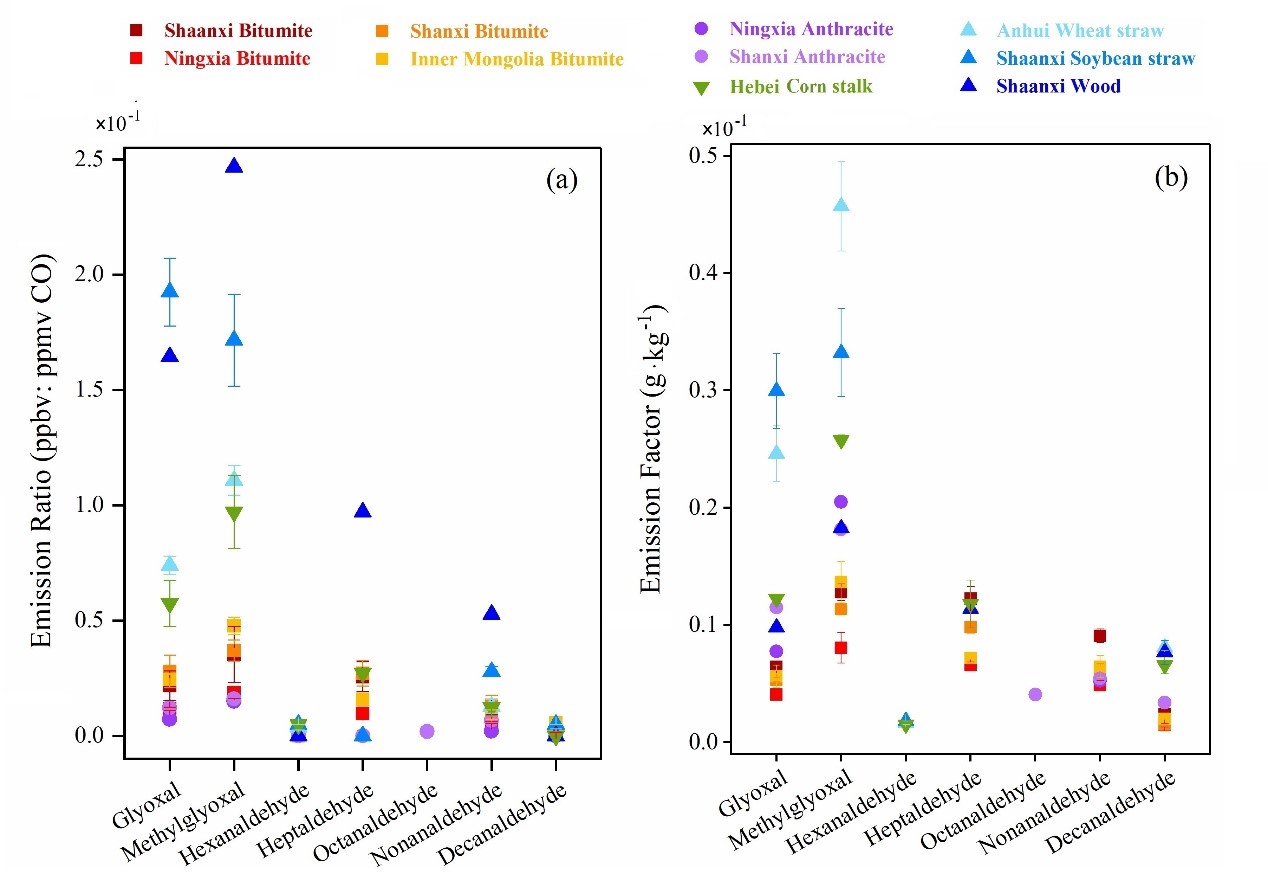Wang, T., Huang, R. J.*, Yang, Lu., Dai, W.T., Ni, H.Y. Gong, Y.Q., Guo, J., Zhong, H.B., Lin, C.S., Xu, W.: Direct emissions of particulate glyoxal and methylglyoxal from biomass burning and coal combustion. Sci. Total Environ., 862, 160757, 2022. DOI10.1016/j.scitotenv.2022.160757.
Glyoxal (Gly) and methylglyoxal (Mgly) are key precursors globally for secondary organic aerosol (SOA) formation. These two species were often thought to be formed in the atmosphere via photochemical oxidation of organics from biogenic and anthropogenic origins, although few studies have shown their direct emissions. In this study, we report direct emissions of particulate Gly and Mgly from different residential fuels typically used in north China. The emission ratios (ERs) and emission factors (EFs) of particulate Gly and Mgly for biomass burning were approximate 5-fold and 7-fold higher than those for coal combustion, respectively. The large variances in emissions of Gly and Mgly could be attributed to the different combustion processes, which influenced by the fuel types and combustion conditions. Our results will be helpful to estimate the formation of SOA and minimize the uncertainty in SOA modelling.

Fig 1. Emission ratios (a) and emission factors (b) of glyoxal, methylglyoxal and five aldehydes.

